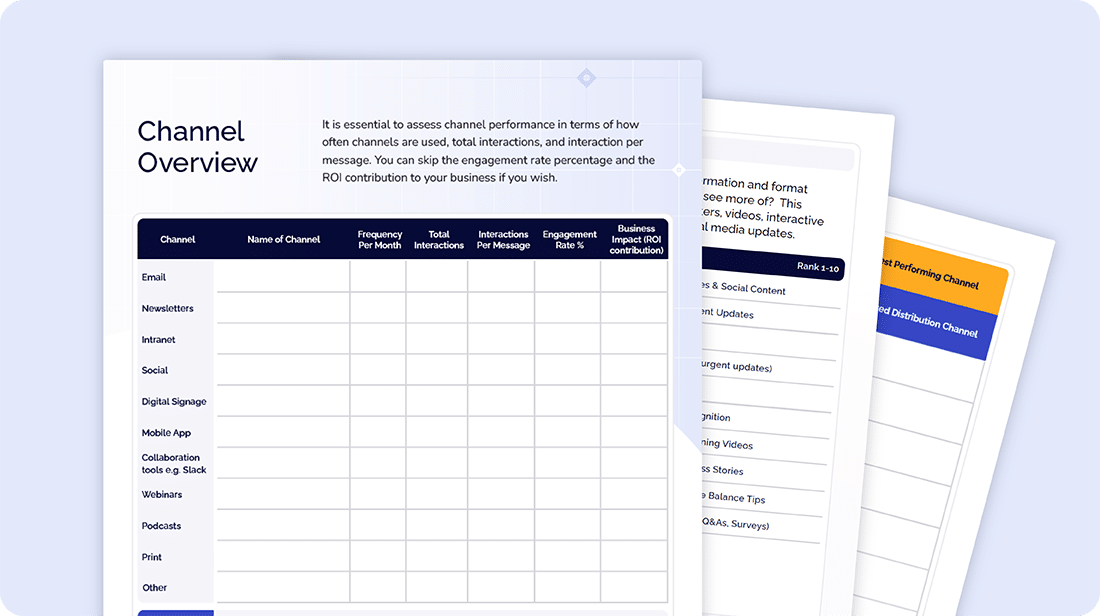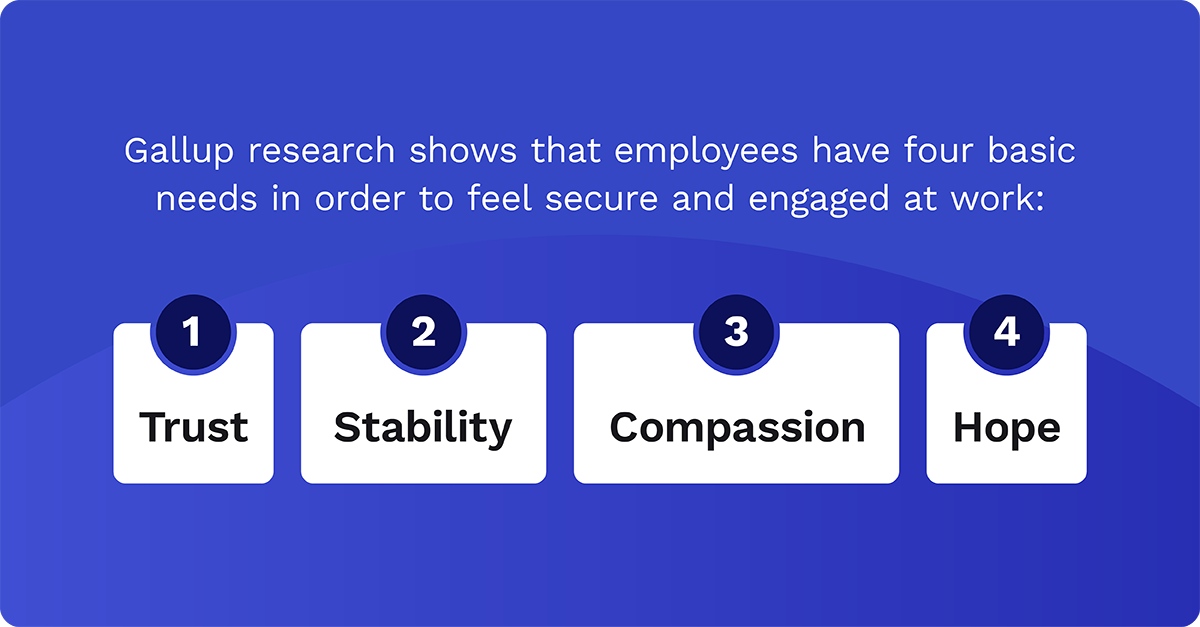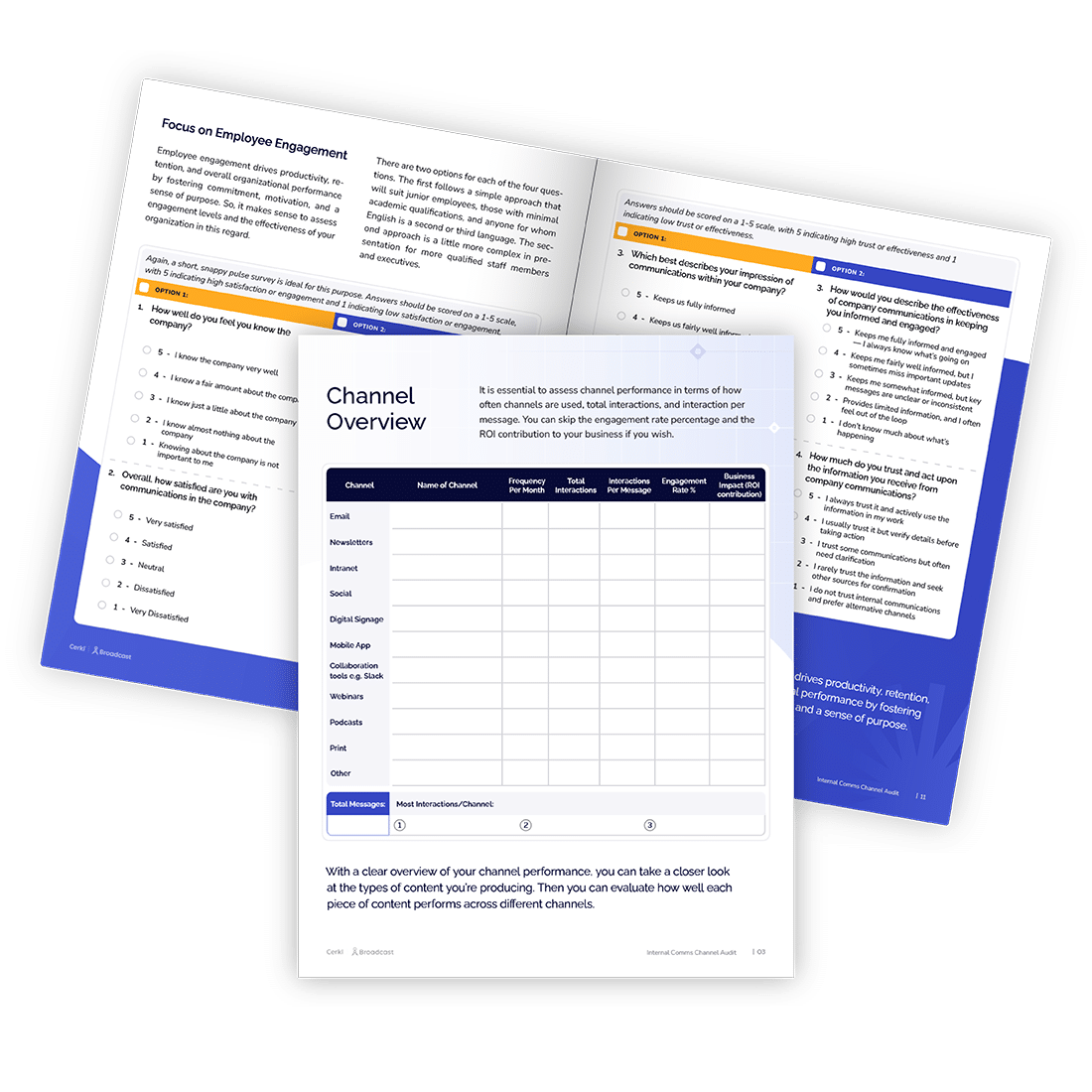We are exploring top 4 areas you can address to maintain adequate tech employee engagement and retention during the layoffs.

.png)
Strategy is an important component of internal communications. Ensure you’re communicating through the right channels at the right frequency with our Internal Communications Channel Audit worksheet.
Access NowIn the fast-paced tech industry, layoffs have become a common occurrence. A Crunchbase Tech Layoffs Tracker reveals that by August 2023 more than 160,233 workers in U.S-based tech companies (or tech companies with a large U.S. workforce) were laid off in mass job cuts. This is 67,233 more jobs that were lost in 2022.
This article explores the enormous impact of tech layoffs, the importance of transparent communication, engagement strategies post-layoffs, monitoring and measuring impact, and the value of utilizing internal communication software.
The tech industry—primarily west coast tech hubs including San Francisco and Seattle—has seen fluctuating job markets due to substantial tech layoffs. Some of the biggest names mentioned are Microsoft, Amazon, Alphabet, and Meta. Microsoft started its second-largest wave of layoffs in company history when it signaled it would cut 10,000 jobs between mid-January and the end of March. Like many other tech heavyweights, it was trimming costs as customers scaled back their spending (particularly on Windows) during the pandemic recovery. Another tech giant, Dell, laid off 6,650 employees after a brutal fourth quarter where computer shipments plunged an estimated 37 percent.
Layoffs, whether caused by shifts in market trends or financial struggles of the parent company, can have profound psychological effects on employees at every level. Some common reactions include shock, denial, and fear about the future. Employment stability becomes a significant concern which can lead to lowered job satisfaction and increased stress at the workplace.

When tech employers decide to conduct layoffs, clear and transparent communication with employees is critical. Certain principles guide how this should be handled.
Employees should be informed about layoffs as soon as possible. Waiting until the last moment can damage trust and create tension in the workplace. Salesforce first announced that it was laying off 10% of the workforce in January, but some employees didn’t know until February. In the week of March 10, more employees were just learning they have been laid off. Layoff announcements should happen as soon as the decision is made, giving employees enough time to process the information and plan accordingly.
Upgrade your company’s internal comms to enhance employee communication

There’s no-size-fits-all way of telling staff they’ve been laid off. Rather, the manner of communication should vary depending on the audience. While the executive suite might need detailed financial data justifying layoffs, the rest of the employees might want information about severance packages, job search help, and other related concerns.
During a merger or acquisition, personalized communication with employees is paramount. It’s vital to maintain a consistent message across all communication channels while also keeping it relevant to each employee’s specific attributes. Demonstrating empathy and involving key leaders can help foster trust and ease uncertainty among employees.
Transparency requires clarity. A total of 51 percent of employees in the age group 18 to 34 reported that they felt unprepared for a layoff. Using complex jargon can raise anxiety levels among employees and even lead to panic. To prevent this, clearly explain the reasons for job cuts, who will be affected, when it will happen, and what steps the company is taking to assist affected employees.

Layoffs are an emotional time for everyone involved. Communicating with empathy demonstrates that the company values its employees beyond their job roles. This can significantly help to maintain the morale of remaining employees.
The period following tech layoffs requires proactive engagement strategies. Here are our top four areas you can address to maintain adequate engagement and retention during the layoff period.
The fear of more job cuts can trigger mass resignations. The psychological impact can be mitigated by reassuring employees about their job stability and the future of the company.
Gallup research shows that employees have four basic needs in order to feel secure and engaged at work—trust, stability, compassion, and hope. Leaders who can address these needs will be able to navigate change with clarity and purpose while keeping their employees within their companies.

Transparent communication must continue even after layoffs. Regular updates about how the company is progressing toward stability and growth can restore trust and morale.
Michigan State University summarizes the benefits of transparent communication:
After implementing layoffs it is crucial to create opportunities for remaining employees to voice their concerns or suggestions. Opportunities like employee communication surveys, town hall meetings, or even anonymous suggestion boxes can significantly help in this regard.

Companies must remain flexible, understanding that the post-layoff phase might require significant changes. Agile and adaptive management strategies can help companies navigate this period effectively.
Upgrade your company’s internal comms to enhance employee communication

Regular monitoring of engagement metrics, employee job satisfaction surveys, and turnover rates can help companies assess the impact of layoffs and the effectiveness of their post-layoff strategies. This way, they can learn and build future communications with the knowledge they have from the analytics you gather.
Modern internal communication software can be of significant help in ensuring transparent and effective communication. These platforms allow timely, clear, and broad-based communication, mitigating the psychological impacts of layoffs on employees.
Tech layoffs can be a challenging period for any organization. But empathetic and strategic internal communication can help navigate these waters and foster a sense of unity among the remaining employees. By understanding the impact of layoffs, prioritizing transparent communication, implementing engagement strategies, monitoring impact, and utilizing communication software, HR managers can play a pivotal role in shaping a positive and resilient environment for the future.
You have the opportunity to improve internal communication with Cerkl Broadcast and find out how successful companies use our internal communication software to manage their communications during tech layoffs. In fact, you can get the template they use for free, no risk, and no commitment.

Upgrade your company’s internal comms to enhance employee communication
Want feedback? If you complete the template we will provide you with free, personalized advice on how to improve. Get started using your email.
How many people are laid off in tech? Exact figures vary, but during the COVID-19 pandemic in 2020, the tech industry saw significant layoffs. Major companies like Uber, Airbnb, and others laid off thousands due to economic uncertainties. However, industry recovery and job market fluctuations make it challenging to provide a precise number for total tech layoffs. According to Crunchbase, 93,000 jobs were cut in 2022, and by early August 2023, 160,233 people had already been laid off.
Where are tech layoffs happening? Tech layoffs have occurred globally in various locations. In the United States, tech hubs like San Francisco and Silicon Valley, Seattle, and New York City experienced significant layoffs. Other countries, including India, the UK, and Canada, also report tech job cuts due to economic challenges, shifts in business strategies, and the impact of the pandemic.
How bad is the tech job market right now? The tech market's condition varies. Overall, it remains robust, with continued innovation and demand for technology products and services. However, factors like supply chain disruptions, talent shortages, and economic uncertainties can impact specific sectors. The market's health is subject to fluctuations influenced by global events and industry dynamics.

Upgrade your company’s internal comms to enhance employee communication